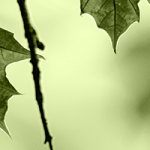Hardiness Zones
Our goal is to offer trees across the United States that are associated with key people and events in our nation’s history. Please take a minute to read about each of the trees currently in our collection. Then, choose one (or more!) of your favorites.
However, it’s important to choose the best tree for your location. Please consider the fact that all trees have characteristics that suit it for some landscape use. Each also has certain requirements critical to its survival in the yard. Some are more cold-hardy than others, so check their Zone rating for hardiness. Also, consider mature size before deciding on your planting site.
What are Hardiness Zones?
 The Plant Hardiness Zones divide the United States and Canada into 11 areas based on a 10 degree Fahrenheit difference in the average annual minimum temperature. (The United States falls within Zones 2 through 10). For example, the lowest average temperature in Zone 2 is -50 to -40 degrees Fahrenheit, while the minimum average temperature in zone 10 is +30 to +40 degrees Fahrenheit. See more.
The Plant Hardiness Zones divide the United States and Canada into 11 areas based on a 10 degree Fahrenheit difference in the average annual minimum temperature. (The United States falls within Zones 2 through 10). For example, the lowest average temperature in Zone 2 is -50 to -40 degrees Fahrenheit, while the minimum average temperature in zone 10 is +30 to +40 degrees Fahrenheit. See more.
Suggested hardiness zones have been indicated for all trees and perennials available online from the Foundation. If a range of zones, for example, zones 4-9, is indicated, the tree or perennial is known to be hardy in zones 4, 5, 6, 7, 8, and 9. Suitable hardiness means a plant can be expected to grow in the zone’s temperature extremes, as determined by the lowest average annual temperature.
Keep in mind that local variations such as moisture, soil, winds, and other conditions might affect the viability of individual plants.

